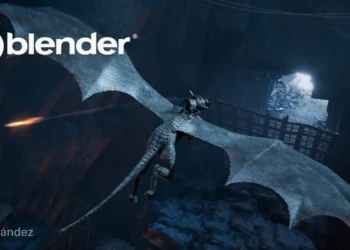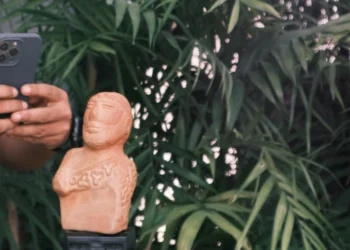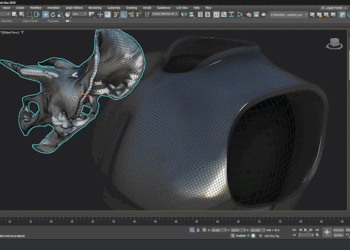Pixelfarm has released PFTrack 2017, a significant upgrade to their matchmoving and layout software. Features in the new version, as listed in the release notes, include:
The full functionality of PFDepth is now integrated into PFTrack.
- More ways to manipulate depth maps:
- Updated Z-Depth Solver node
- Z-Depth Tracker, Merge, Edit, Filter, Composite and Cache nodes
- Z-Depth Object node
- Rotoscope-based depth editing
- Ideal tool to prepare clips for z-based compositing
- Extended stereo camera and image pipeline:
- Build Stereo Camera node to automatically position the right-eye camera after tracking the left-eye
- Stereo Disparity Solver, Disparity Adjust and Disparity-to-Depth conversion nodes
- Fix common issues such as stereo keystone alignment and left/right-eye colour and focus mismatches
- Render left and right-eye images from a single clip using Z-Depth data
Improvements to the User interface and productivity.
- Node creation panel has been updated with nodes organised into groups to make them easier to find
- New Custom node group, where commonly used nodes can be placed for quick access
- Tree layouts can be saved as XML preset files to help quickly construct common sets of nodes
- Tree preset XML files can be copied onto other machines or given to users to share common layouts
Extended camera support.
- Added support for reading ARRI RAW media files
- Camera and lens metadata is automatically read from RED and ARRI source files
- ARRI metadata can also be read from DPX, OpenEXR or Quicktime ProRes files
- Added support for importing custom XML metadata to the Clip Input node
- All metadata is passed through the tree and can be accessed by python or export node
Advanced photogrammetry texture extraction tools
- An optimized texture map can now be created automatically in the Photo Mesh node as part of the simplification process
- Exposure and brightness differences in the source media can be automatically corrected to provide the best quality texture map
- Exposure balanced images are automatically passed down-stream, and can be used in the Texture Extraction node for manual texture painting if required
- Normal, displacement and occlusion maps can also be generated during simplification, to ensure the simplified mesh retains as much visual fidelity as possible
- Normal maps support both world and Mikk tangent spaces
- Occlusion maps can be generated for either the sky or local surface occlusion
- Additional texture maps are exported automatically by the Export node
Experimental RGBD pipeline for depth sensors
- Z-Depth data captured by external sensors can be attached to an RGB clip and passed down the tracking tree
- Auto Track and User Track nodes updated to read z-depth values for trackers at each frame
- Camera Solver node will use tracker z-depth values to help solve for camera motion
- Can reduce drift in long shots
- Can improve accuracy when tracking complicated camera movements
- Provides 3D data for nodal pans
- Provides a real-world scale without any additional steps
- Z-Depth Mesh node can be used to convert depth maps into a coloured triangular mesh
Also of note, an IOS application is planned for release during 2017 that will allow depth data to be recorded using an IPad and the Occipital Structure Sensor capture device.
Plus many more features and fixes. Watch some sample videos and read more details about the new features on The Pixel Farm’s website.







